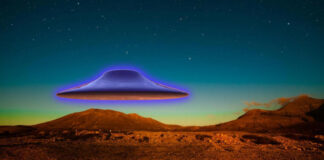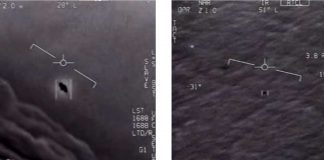NOVEMBER 1, 2019
The universe doesn’t look right. It suddenly looks . . . out of whack.
 G. Illingworth, D. Magee, and P. Oesch, University of California at Santa Cruz; R. Bouwen… Called the eXtreme Deep Field (XDF), this image was assembled by combining 10 years of Hubble Space Telescope photographs taken of a patch of sky with about 10,000 galaxies. The universe is unimaginably big, and it keeps getting bigger. – NASA; ESA
G. Illingworth, D. Magee, and P. Oesch, University of California at Santa Cruz; R. Bouwen… Called the eXtreme Deep Field (XDF), this image was assembled by combining 10 years of Hubble Space Telescope photographs taken of a patch of sky with about 10,000 galaxies. The universe is unimaginably big, and it keeps getting bigger. – NASA; ESA
That is the strange message coming from astronomers and physicists, who are wondering whether they need to revise cosmic history.
The universe is unimaginably big, and it keeps getting bigger. But astronomers cannot agree on how quickly it is growing — and the more they study the problem, the more they disagree. Some scientists call this a “crisis” in cosmology. A less dramatic term in circulation is “the Hubble Constant tension.”
Nine decades ago, the astronomer Edwin Hubble showed that the universe is orders of magnitude vaster than previously imagined — and the whole kit and kaboodle is expanding. The rate of that expansion is a number called the Hubble Constant.
It’s a slippery number, however. Measurements using different techniques have produced different results, and the numbers show no sign of converging even as researchers refine their observations.
No one is panicking. To the contrary, the theorists are intrigued. They hope the Hubble Constant confusion is the harbinger of a potential major discovery — some “new physics.”
“Any time there’s a discrepancy, some kind of anomaly, we all get very excited,” said Katherine Mack, a physicist at North Carolina State University who co-wrote a recent paper examining the issue.
The Hubble Constant is a central feature of any theory about the evolution and ultimate fate of the universe. This number may have zero effect on daily human existence, but there’s a lot at stake cosmologically.
“Where’s it all going to go? How’s it all going to end? That’s a big question,” Mack said.
One widely supported estimate of the cosmic expansion uses the background radiation that permeates space — light emitted when the universe was young. That gives a Hubble Constant of about 67 kilometers per second per megaparsec. (A parsec is a distance of a bit more than three light-years. According to this estimate, a galaxy one million parsecs from Earth is receding at 67 kilometers, or about 42 miles, per second, and a galaxy twice as distant is receding at 134 kilometers per second.)
But another carefully calibrated measurement, based on light emitted from exploding stars — supernovae — has come up with a Hubble Constant of 73.
 An infrared image of the Helix Nebula by NASA’s Spitzer Space Telescope. This planetary nebula is in the constellation of Aquarius, about 650 light-years away. This object is often photographed by amateur astronomers for its vivid colors and eerie resemblance to a giant eye. – NASA/JPL-Caltech/University of Arizona/NASA/JPL-Caltech/Univ.of Ariz.
An infrared image of the Helix Nebula by NASA’s Spitzer Space Telescope. This planetary nebula is in the constellation of Aquarius, about 650 light-years away. This object is often photographed by amateur astronomers for its vivid colors and eerie resemblance to a giant eye. – NASA/JPL-Caltech/University of Arizona/NASA/JPL-Caltech/Univ.of Ariz.
This isn’t horseshoes or hand grenades: Close doesn’t count. People want the actual, real, universe-expanding Hubble Constant, and no one is eager to round it up to the nearest 10.
This summer, as leaders in the field assembled in Santa Barbara, Calif., to discuss the “tension,” physicist Wendy Freedman of the University of Chicago presented a new estimate of the constant that was based on examination of red giant stars. Her number: 70. But the advocates for 67 and 73 held their ground. The tension remained. Freedman told The Washington Post, “There can’t be three different numbers.”
There are more than that, actually. On Oct. 23, researchers at the University of California at Davis published a paper that looked at three gravitational lenses — in which massive galaxies function like magnifying glasses for things behind them in deeper space. Their number: 77.
It could be simply that some of the measurements are based on erroneous assumptions. Imagine two speed guns giving strikingly different measurements of Max Scherzer’s fastball. One obvious, boring explanation is that one of the speed guns needs to be recalibrated.
It’s conceivable, for example, that astronomers haven’t fully factored in the way cosmic dust can interfere with observations, which wouldn’t be the first time that has happened. But the more delicious possibility is that there’s something new to be discovered about the way the universe evolved.
One idea floating around is that there could have been something called Early Dark Energy that skewed the appearance of the background radiation.
“New physics might be that there’s some form of energy that acted in the earliest moments of the evolution of the universe. You’d get an injection of energy that’d then have to disappear,” Freedman said.
“If it’s new physics, it’s so exciting,” says Jo Dunkley, a professor of physics at Princeton. But, she added, “I’m just not willing yet to jump into the opinion that it’s new physics. I’m more skeptical of our ability to understand our measurement uncertainties.”
Measuring the Hubble Constant requires knowing the distance to the objects we observe in space. This is hard. At a glance it’s impossible to know if a star is unusually bright because of its absolute luminosity or simply because it is relatively close.
A modest number of stars that are relatively nearby change their apparent position against the background of more distant stars and galaxies as the Earth orbits the sun. That permits triangulation and a precise measurement of their distance. That’s the first rung of the distance ladder used by astronomers; the higher rungs aren’t quite as sturdy.
The most reliable “standard candles” for measuring cosmic distances have been Cepheid variable stars, which pulse in brightness. Early in the 20th century, Henrietta Swan Leavitt, a then-obscure employee of the Harvard College Observatory, discovered that the intrinsically brighter stars have longer periods. This insight — Leavitt’s law — allows astronomers to know the Cepheid’s absolute luminosity, then gauge the distance to the star based on how bright or faint it appears.
 The Andromeda galaxy is about 2.5 million light-years away. Andromeda is the nearest large galaxy to our own. – NASA/JPL/California Institute of Technology/NASA/JPL/California Institute of Technology
The Andromeda galaxy is about 2.5 million light-years away. Andromeda is the nearest large galaxy to our own. – NASA/JPL/California Institute of Technology/NASA/JPL/California Institute of Technology
In 1924, Edwin Hubble announced that he had found a Cepheid variable star in the Andromeda spiral nebula. That revealed that Andromeda is not a cloud of material lurking in our own galaxy, but rather is a separate galaxy, a vast swirl of stars at tremendous distance. Countless enigmatic nebulae seen by astronomers suddenly revealed their true nature, as galaxies, strewn across a very large universe.
Late in that decade, Hubble and his colleague Milton Humason revealed that the light from distant galaxies was red-shifted, meaning these galaxies are moving away from us. Moreover, the redshift increased with distance. The universe was telling us that it is expanding.
(One common misconception is that these galaxies are flying through space away from one another. But it’s space itself that’s expanding, like stretched taffy. And just to be clear: The Hubble Constant in question is the rate of expansion in our “local” universe, not the rate of expansion when the background radiation was first emitted billions of years ago. Over time, the Hubble Constant isn’t constant.)
Another surprise arrived in 1998. The orthodox view of cosmology was that the expansion was slowing down, but two teams of researchers announced that they had discovered that the expansion has been accelerating.
Theorists have gradually assembled a Standard Model of cosmology. In the Standard Model, only about 5 percent of the universe is composed of ordinary matter — the stuff that rocks and trees and frogs and human beings are made of. Another 25 percent, roughly, is dark matter, which emits no radiation and is known only from the way its gravity affects the motion and configuration of galaxies. The rest is dark energy, the driving factor in the acceleration of cosmic expansion.
 The Crab nebula, which spans about 10 light-years, is one of the most intricately structured and dynamic objects ever seen. In its center lies a pulsar, a neutron star as massive as our sun but only the size of a small town, NASA says. – NASA/ESA/JPL/Arizona State University/NASA/ESA/JPL/Arizona State Univ.
The Crab nebula, which spans about 10 light-years, is one of the most intricately structured and dynamic objects ever seen. In its center lies a pulsar, a neutron star as massive as our sun but only the size of a small town, NASA says. – NASA/ESA/JPL/Arizona State University/NASA/ESA/JPL/Arizona State Univ.
At the dawn of the 21st century, this Standard Model seemed to pass every observational tests. And any disparities in the measurement of the Hubble Constant would surely be ironed out with further observations, scientists assumed. They had even nailed down the age of the universe precisely: 13.8 billion years.
“We felt really good,” said Adam Riess, a professor of physics and astronomy at Johns Hopkins University who shared the 2011 Nobel Prize in physics for the discovery of the acceleration of the universe. He added, jokingly, “We should have stopped taking data.”
Riess continues to study supernovae and has refined his estimates of the Hubble Constant. His latest published number is 73.5, plus or minus 1.4. And Riess points out that a completely different technique, scrutizining seven gravitational lenses, has produced an average Hubble Constant estimate of 73.7.
Meanwhile, estimates from the team behind the Planck space telescope, which studied the cosmic microwave background radiation, continue to center on 67.
So the disparity persists. That leaves open, Riess said, the tantalizing possibility: “No one’s wrong. Something else is going on in the universe.”
He cautioned against trying to intuit what that something might be.
“We are wired to use our intuition to understand things around us,” Riess said. “Most of the universe is made out of stuff that’s completely different than us. This adherence to intuition is often wildly unsuccessful in the universe.”
Courtesy/Source: Washington Post









































































































